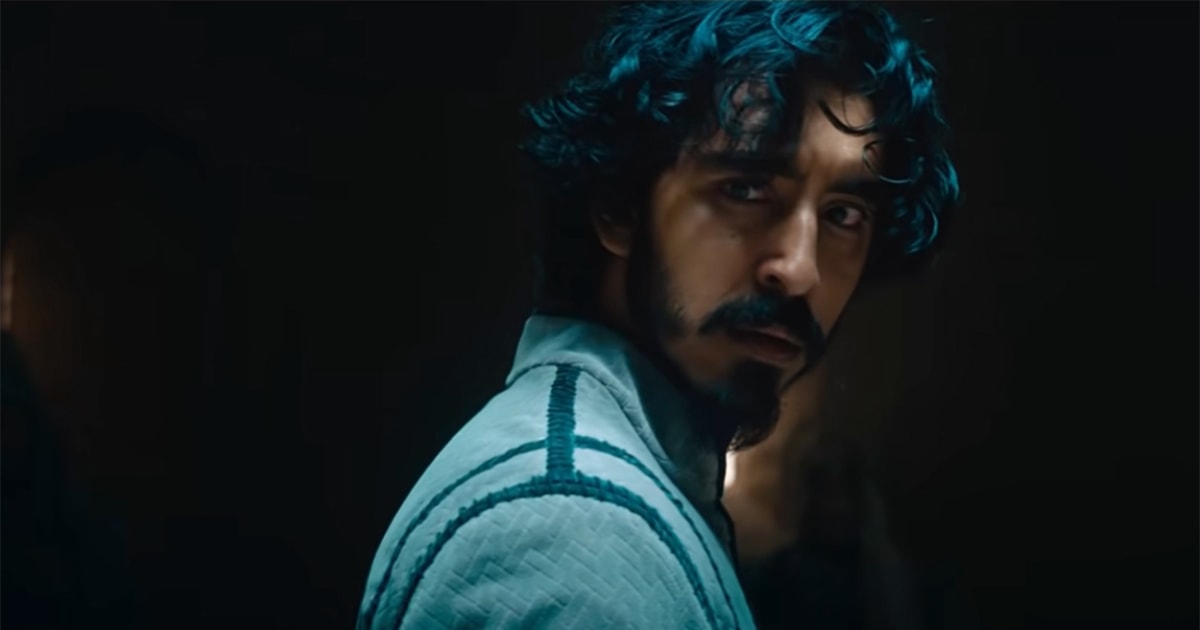
Director David Lowery’s new film “The Green Knight,” out Friday, comes draped in lush visuals and the cultural caché of the medieval epic poem on which the story is based. But the movie’s modern, slyly deflationary approach to its material has as much to do with that classic film of antiheroism, “Monty Python and the Holy Grail,” as it does with high Arthurian legend.
Gawain is the butt of a joke, not a hero. And the joke is precisely that heroes are butts.
Lowery doesn’t quite have the Pythons’ genius for nonsense and antistructure. But in his somewhat quieter, highbrow vein, he, too, manages to effectively fart in the general direction of noble sacrifice, honor and narrative. It may not be the greatest film to ever mock Arthurian legend, but it’s a solid and worthwhile second.
As most people who took high school English probably remember, “Gawain and the Green Knight” is set in the time of King Arthur. In the story, a giant green knight interrupts a Christmas feast of the knights of the Round Table and offers to take any blow one of the knights there can give him. In exchange, he will return the blow a year hence. It doesn’t seem like a great bargain, but brave Gawain accepts and promptly strikes off the knight’s head—at which point the green giant unexpectedly picks the severed head up and rides off. First, though, he tells Gawain he has to find him at his Green Chapel a year hence to fulfill his pledge and be beheaded himself.
In the original poem, Gawain is a typically heroic sort, filled to the top of his (temporarily attached) head with honor and nobility and bravery and all the other virtues. The movie version, where Gawain is played by Dev Patel, is a different matter. He’s the king’s nephew, and while he longs vaguely for glory, he spends most of his days drinking and fornicating. In this telling, Gawain impetuously accepts the challenge from the Green Knight (Ralph Ineson) less out of chivalry than to prove himself to the king (Sean Harris). A year later, Gawain shows understandably little interest in going to find the knight who has promised to behead him; the king has to badger him into it with vague rewards of greatness and honor.
It’s not just the King who badgers Gawain, however. The movie sometimes seems like a conspiracy against him, though a conspiracy by whom is hard to say. His mother, Morgan Le’Fay (Sarita Choudhury) performs some rituals which may or may not have to do with the Green Knight’s appearance, suggesting she’s plotting against her son to destroy him, or maybe test him, or maybe out of some unknown motivation. Other people Gawain meets along the way—like the mysterious, possibly dead Winifred (Erin Kellyman)—seem to know more than him about his quest.
All these shadowy manipulators make the narrative feel like a kind of put on, or a “game” as the Green Knight himself calls the Christmas challenge. Gawain has to go on a quest because in legends (and, not coincidentally, in Hollywood movies) the hero goes on a quest. Doing so demonstrates and inculcates heroism and other admirable qualities, supposedly. (As Gawain and other characters point out more than once, going to get your head cut off seems more foolhardy than admirable.)
Nor does Gawain ever come into his own bravery and generosity in the accepted Hollywood fashion. He never gets to show off his skills in swordplay, if he even has any; there’s less fight choreography in “The Green Knight” than in the ostentatiously low-budget “Holy Grail.”
Instead, Gawain gets fooled, intimidated, robbed and seduced along his journey. He loses the scarf which is supposed to magically protect him. Winifred has to chastise him into doing something semi-heroic. (“A knight should know better!” she harrumphs.) Whenever he comes upon skeleton remains—hanging at a crossroads, sunken in a pond, coming upon him in a vision—his lips curl in disgust and horror.
Nor does Patel ever lose his look of hangdog confusion and misery; he always seems like he’d much rather be doing something else. The only time he seems truly happy is in the movie’s opening scene. There he radiates earthy bonhomie and goodwill, before his destiny seizes him by the nether regions.
But what is that destiny? The movie offers various speculations. Perhaps Gawain is meant to become king himself, and this is his trial by fire and sword. Perhaps the Green Knight is a symbol of death, and Gawain’s progress toward him is a progress toward the green moss that grows over a corpse: Wisdom is confronting the end of life on which more life grows in an endless cycle of rebirth, new heads sprouting from old shoulders, world without end.
Thanks in part to Patel’s subtle and not-so-subtle expressions of skepticism and irritation, these multiple explanations and possibilities come across less as ancient mystery than modern absurdity. Lowery reads a touch of Kafka back into the medieval legend, and the Green Knight’s magical bargain becomes a kind of bureaucratic hoop. Gawain signed a contract and now he has to fulfill the terms, however pointless or brutal, in the name of some abstract principle that everyone has decided is more important than his life.
The police don’t show up and take everyone away, as at the end of “Holy Grail,” but the conclusion is almost as blankly anticlimactic. Arthur and his knights remain a symbol of heroism and tragic nobility. As such, films about Arthur and his knights remain a good way to kick heroism in the shins, or to point out that tragedy is more often irritating and pointless than noble. Gawain is the butt of a joke, not a hero. And the joke is precisely that heroes are butts. The narrative shoves him here and there and he staggers along, toward whatever green fate awaits him.
Source: | This article originally belongs to Nbcnews.com










